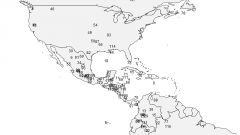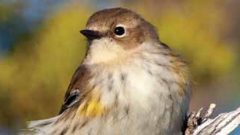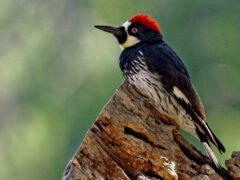The Four Keys to ID
- Size & Shape
A stocky, barrel-chested flycatcher, with a large head and a heavy, long bill for its size. It has rather long wings that can make the tail look short.
Relative Size
Larger than a Western Wood-Pewee, smaller than a Western Kingbird.

 between sparrow and robin
between sparrow and robinMeasurements
- Both Sexes
- Length: 7.1-7.9 in (18-20 cm)
- Weight: 1.0-1.4 oz (28-40.4 g)
- Wingspan: 12.4-13.6 in (31.5-34.5 cm)
© County Lister Brendan / Macaulay Library
- Color Pattern
- Behavior
- Habitat
Regional Differences
A subspecies known as majorinus breeds in southern California and northern Baja California. These individuals have longer wings and tails than Olive-sided Flycatchers in the rest of the range.








































